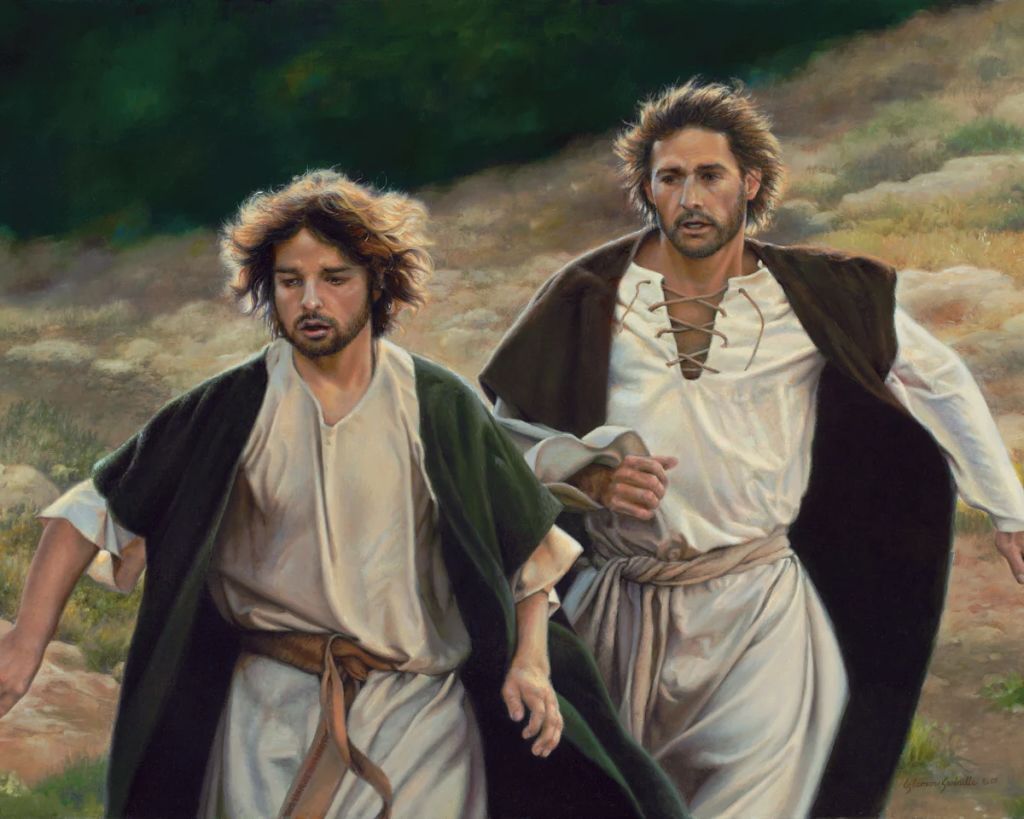The Inner Ring (Part 1)
Running in Circles

I was a non-starter on the basketball team in high school my sophomore year. In fact, I wasn’t on the second string either. Same for my junior and senior years, too. But I did love being part of the team and was willing to go through all kinds of blood, sweat, and tears to run in that circle of brotherhood. I’ll never forget my sophomore year, though, because of the shoes.
In the small farm town I grew up in, there was only one store—a men’s clothing store—that carried the basketball shoes for the team. Back then, you didn’t get to order anything. You simply had to pick your size on a first-come, first-served basis. I must have been slower than my teammates to go get shoes that year because by the time I got to the store all they had left was size 12. I wore a size 10.5.
The entire Spartan team was supposed to be wearing white and burgundy Converse high tops. I loved the look. Except I now faced a painful decision: either get the same style as the rest of the team but nearly two sizes larger than I needed, or get a pair of shoes that fit but didn’t look anything like the rest of the team.
Compare my story with the one Marc Andreessen tells in an interview I recently listened to. Marc was a tech innovator back in the day, and is now a venture capitalist with Andreessen Horowitz. He’s one of the richest people in America. He’s also quite the historian, impresses as intellectually humble, and runs in circles I will never have access to.
Marc tells a hypothetical story based on real life examples in which a young tech inventor hits it big. When the inventor gets to billionaire status, he finds himself invited to gatherings that are populated with A-list movie stars and high-ranking politicians. As he’s welcomed into the club, he listens to the things they talk about and the causes they support. He also notices the euphoria he feels being with this group. The young inventor quickly learns, in unspoken terms, that if he wants to stay in the club he’s going to have to show up at other events if he’d rather not. He going to have to support the causes the others support even if he privately disagrees.
The social pressures to conform at the highest levels of status are tremendous, Marc notes, and it takes a lot of courage for someone in that young inventor’s shoes to choose to wear Puma when everyone else is wearing Converse.
Back in the late 1970s when I was in high school, the only C.S. Lewis books I was aware of was, The Chronicles of Narnia . I still have my boxed set from back then. Too bad I didn’t know then about a talk Lewis gave to college students entitled, “The Inner Ring.” That talk is now one of a collection of Lewis essays in a book entitled, The Weight of Glory .
In that talk, Lewis observes, “I believe that in all men’s lives at certain periods, and in many men’s lives at all periods between infancy and extreme old age, one of the most dominant elements is the desire to be inside the local Ring and the terror of being left outside.”
Think of it this way: If the first local, or social, Ring an infant knows is one’s family, then you can see why struggles with separation anxiety can be so acute for little children. As a person develops through the life cycle into adulthood, the only thing that changes with respect to local Rings is the standard for entrance. One Ring might require wearing Converse while another Ring might require eating caviar.
Lewis is clear: “My main purpose in this address is simply to convince you that this desire [to be included in a social Ring] is one of the great permanent mainsprings of human action. And if it is one of the permanent mainsprings, then you may be quite sure of this. Unless you take measures to prevent it, this desire is going to be one of the chief motives of your life, from the first day on which you enter your profession until the day when you are too old to care.”
If you didn’t take measures to prevent it, what would that look like? “Many even of the rulers believed in Jesus, but because of the Pharisees they were not confessing Him, lest they should be put out of the synagogue; for they loved the approval of men rather than the approval of God” (John 12:42-43). To be sure, how one is perceived in the eyes of others is a dominant theme in the dynamic of Inner Ring aspirations. Other Inner Ring themes would include status and access to power, “it” people, and money.
Lewis continues, “If you do nothing about it, if you drift with the stream, you will in fact be an ‘inner ringer.’ I don’t say you’ll be a successful one; that’s as may be. But whether by pining and moping outside Rings that you can never enter, or by passing triumphantly further and further in—one way or the other you will be that kind of [person].”
That kind of person. Always striving but never sure.
We might hope that the Church is free of this social dynamic, but it is not. Even within the group of twelve disciples, a Ring in itself, there was a desire to get into an ever-closer Ring. “And they came to Capernaum, and when Jesus was in the house he began to question them, ‘What were you discussing on the way?’ But the disciples kept silent, for on the way they had discussed with one another which of them was the greatest” (Mark 9:33-34; cf. Mt 18:1; Lk 9:46, 22:24).
Lewis goes on, “I am not going to say that the existence of Inner Rings is an evil. It is certainly unavoidable. [For example,] “there must be confidential discussions, and it is not only not a bad thing, it is (in itself) a good thing that personal friendship should grow up between those who work together.
“But the desire which draws us into Inner Rings is another matter. A thing may be morally neutral and the desire for that thing may be dangerous. Let Inner Rings be an unavoidable and even an innocent feature of life, though certainly not a beautiful one; but what of our longing to enter them, our anguish when we are excluded, and the kind of pleasure we feel when we get in?”
I have more to say about this next month, but for now I’d like to commend “The Inner Ring” to all readers from middle schoolers on up. Families with kids could read and discuss this. Couples could think about how this might apply to them. Church youth groups could mine this material for several weeks. The idea is to expose the Inner Ring dynamic and question it. The pressure to obey the Ring is heavy, with the promise of deep satisfaction. But once inside, are you truly free or a slave?
PS: I bought the size 12 Converse. Felt like running with ankle weights the entire season. With blisters, too.
Because there’s always a price to pay when you want to be in an Inner Ring.










